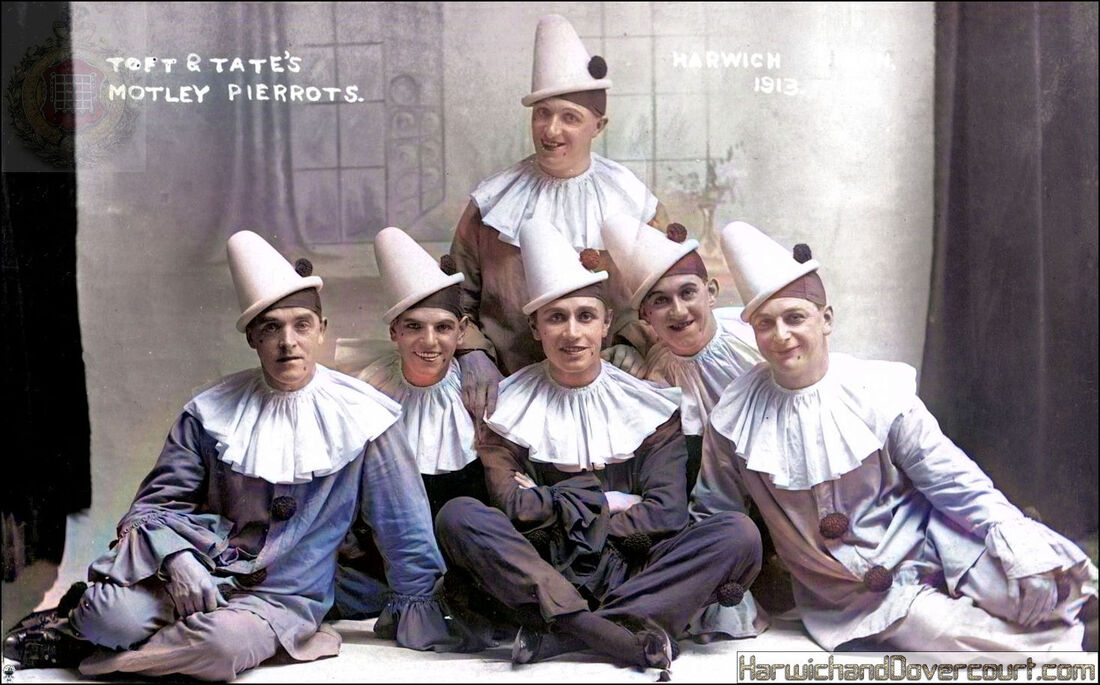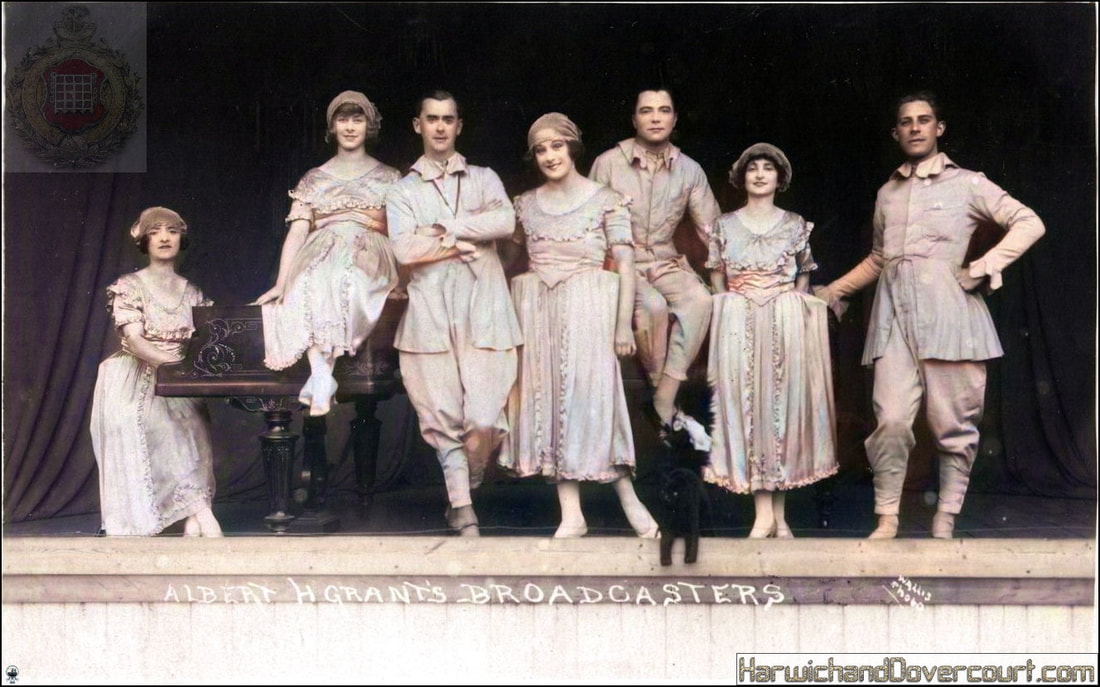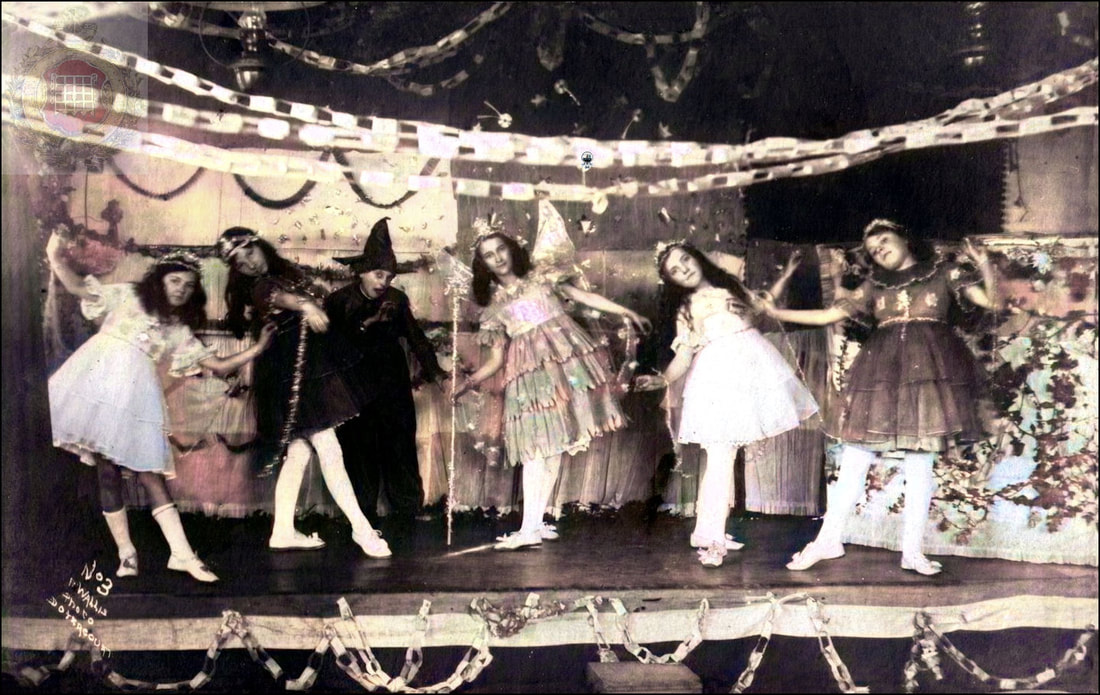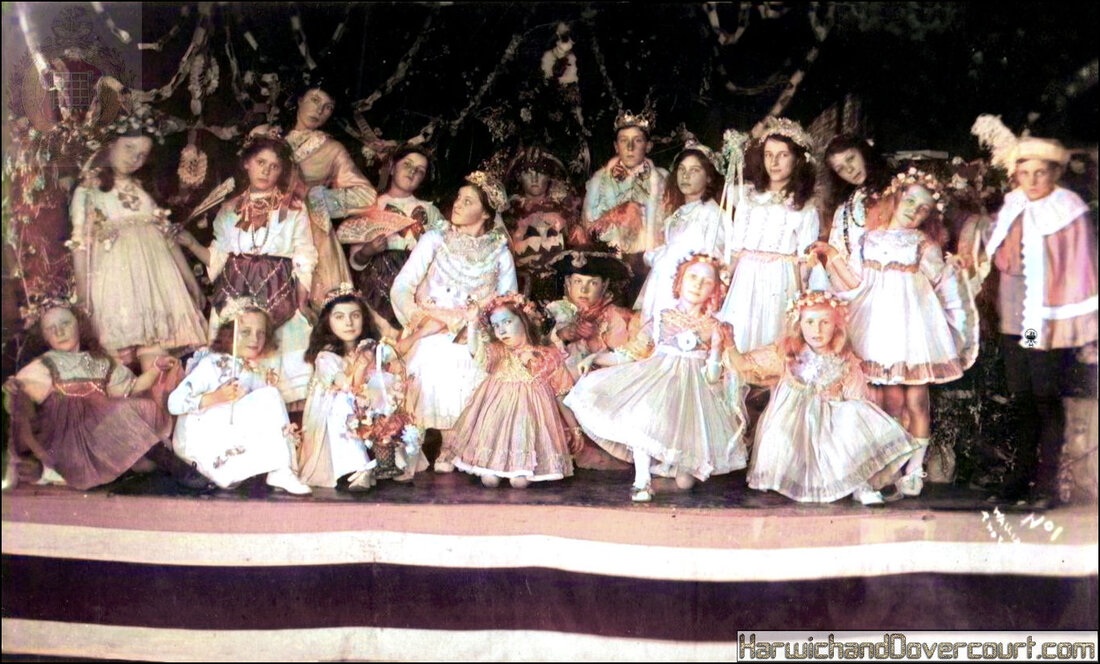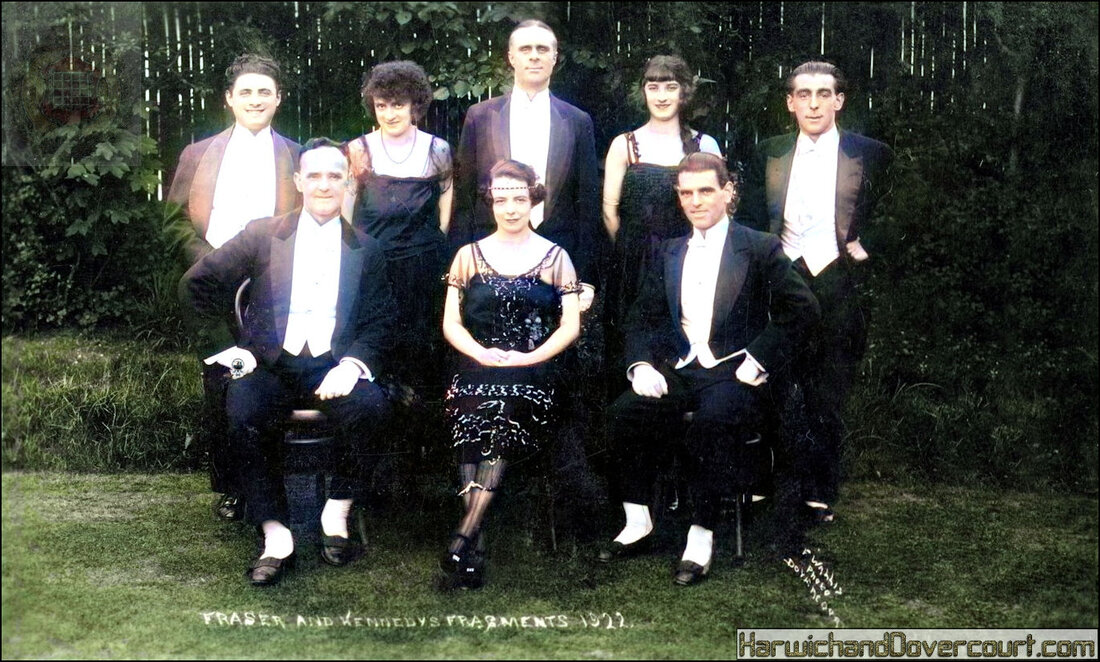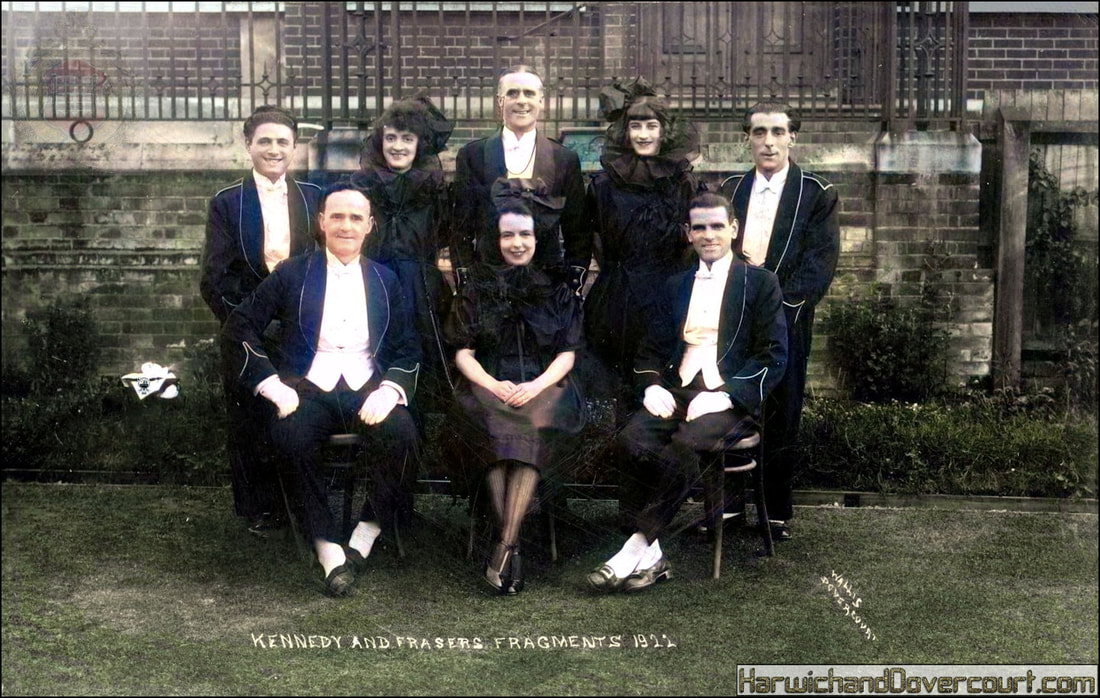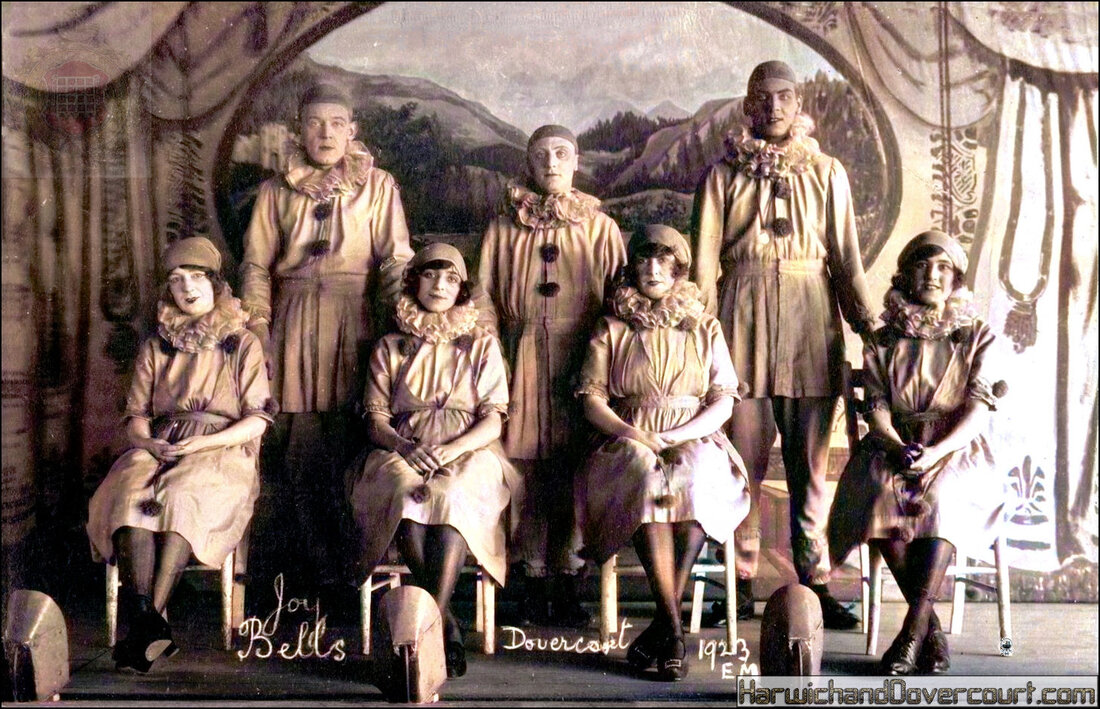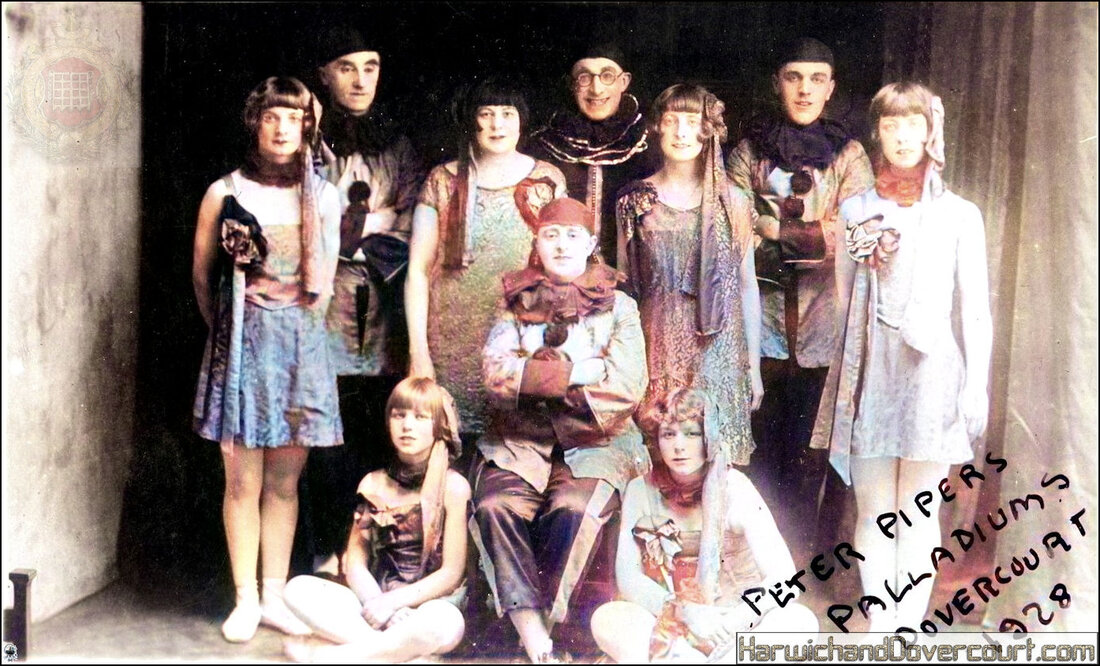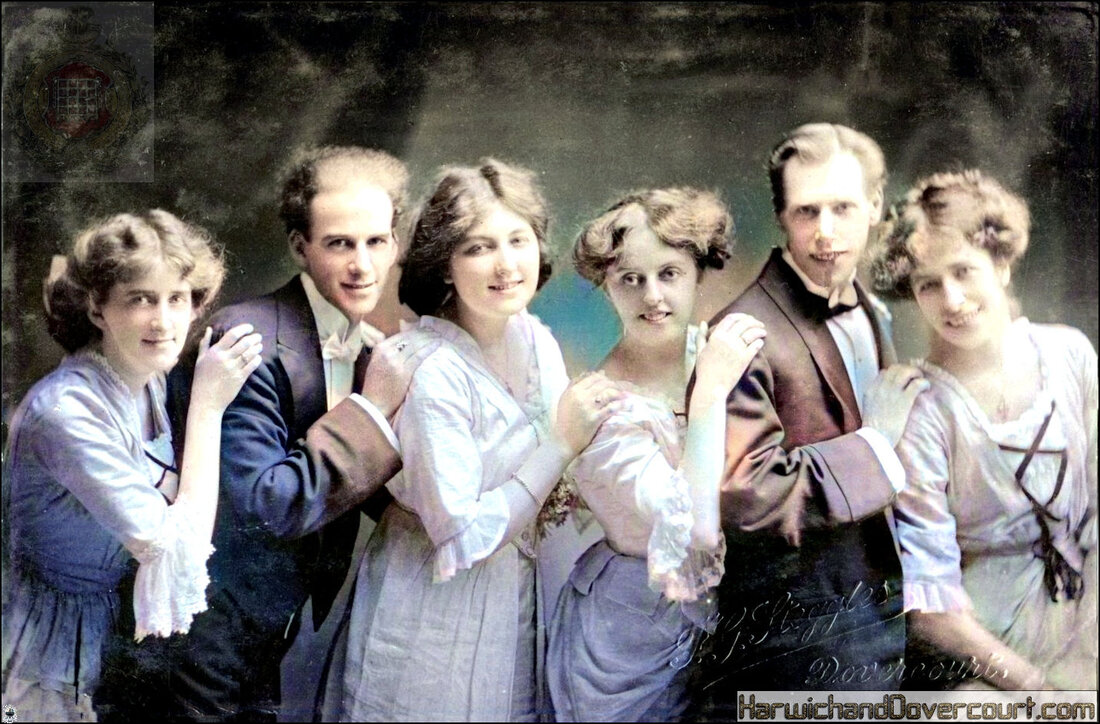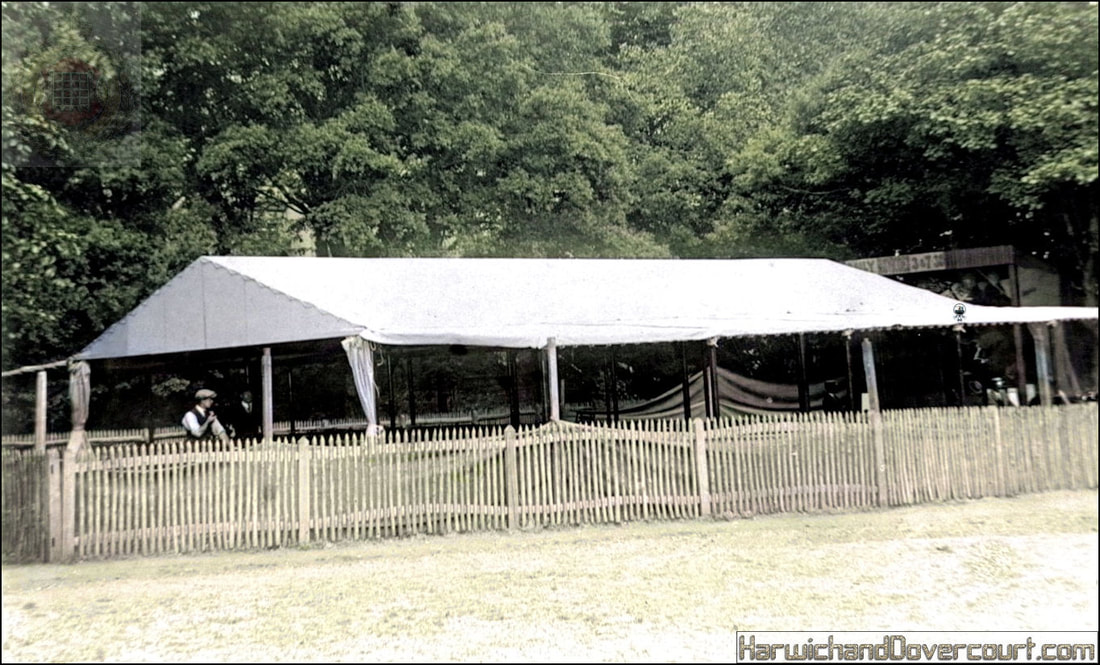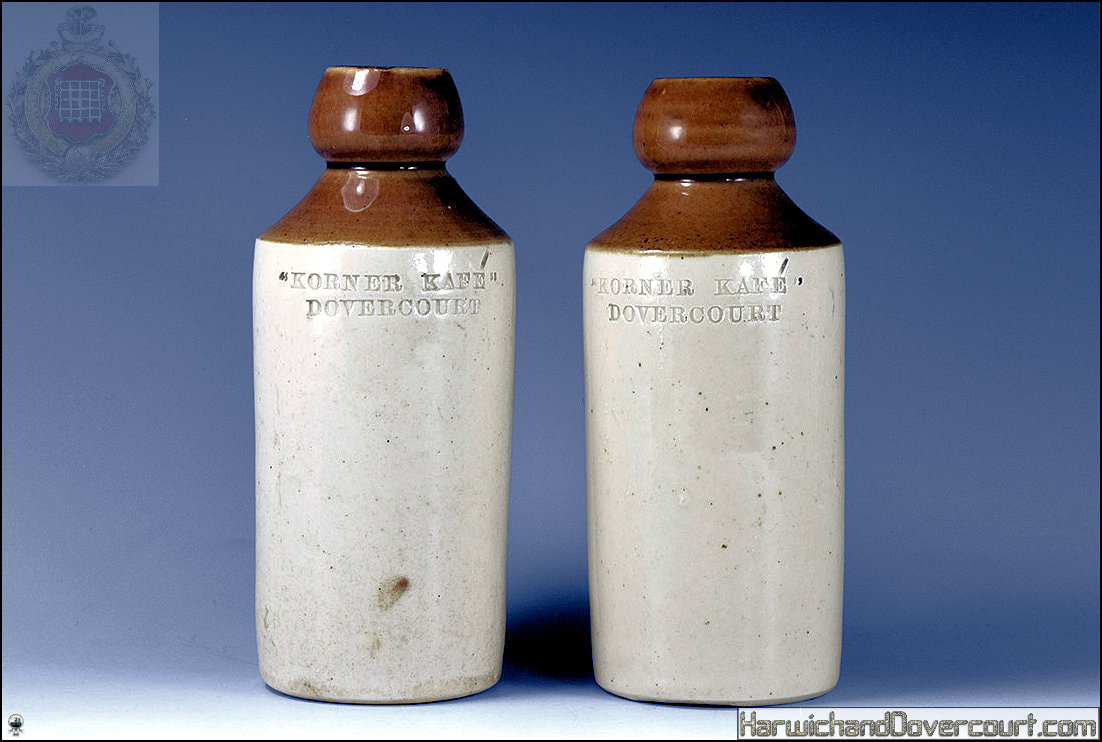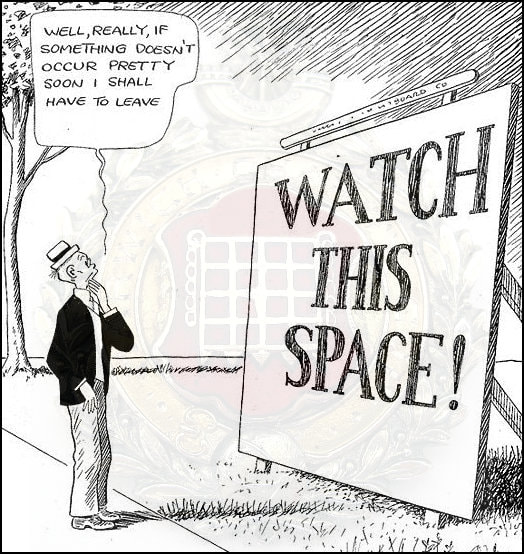~ Harwich & Dovercourt Thespian Section ~
This enhanced page has been created covering "Local Entertainers" including the "Motley Pierrots" who regularly performed across Harwich & Dovercourt, particularly in the "Kosy Korner" in Cliffe Park, Dovercourt through to the "Kennedy and Frasers Fragments" in the Alexandra Theatre, at Dovercourt Bay, Essex.
The early part of the 20th Century was a period of great cultural and social change in Britain. These decades saw the rapid growth of popular entertainment and greater freedom for some women. However other factors came into play like:
The fact that some people wanted to try out new things to escape from the memories of World War One (1914-1918).
Some lucky individuals had more money and more time for leisure activities, before the great crash of October 1929.
There were maor technological advances.
Young people started to challenge the values and lifestyles of their parents, alongside many women were now not content with their traditional roles.
The development of the consumer society altered life for many.
Harwich and Dovercourt also had plethora of theatres and a growing audience, alongside the rapid development of tourism and leisure facilities in the town.
The early part of the 20th Century was a period of great cultural and social change in Britain. These decades saw the rapid growth of popular entertainment and greater freedom for some women. However other factors came into play like:
The fact that some people wanted to try out new things to escape from the memories of World War One (1914-1918).
Some lucky individuals had more money and more time for leisure activities, before the great crash of October 1929.
There were maor technological advances.
Young people started to challenge the values and lifestyles of their parents, alongside many women were now not content with their traditional roles.
The development of the consumer society altered life for many.
Harwich and Dovercourt also had plethora of theatres and a growing audience, alongside the rapid development of tourism and leisure facilities in the town.
~ 01 ~ "Toft & Tate's Motley Pierrots", Harwich Green (1913) H&D ~
Toft Tate's Motley Pierrots, Harwich Green, Essex (1913)
Pierrot troupes, alongside Punch & Judy and pantomime are one of the very few, indigenous, British performance forms – they are an important part of our cultural heritage and folk traditions. One of the more famous troupes was "Toft Tate's Motley Pierrots" who performed on Harwich Green in 1913 and were regular favourites in Dovercourt Cliffe Park (Kosy Korner), Harwich Green, All the Bandstands and Victoria Hall.
The origins of the Pierrot character come from the medieval Italian Comedy or Commedia d’ell Arte, as do those of Harlequin & Columbine, whom we associate with pantomime and Mr Punch of Punch & Judy fame.What is unique about Pierrot in Britain, is that there evolved troupes of Pierrots specifically at the seaside: the story begins with the development of the seaside resorts and the mass market of holidaymakers as the industrial revolution took hold.
The Pierrots entertainers were first seen around 1891, but quickly took-over as the main entertainers who performed on high days and holy days at both the seaside’s and inland fairs. Within just a decade, many seaside resorts could boast of 3, 4 or even 5 different troupes, all vying with one another for the favour and attention of the holidaymakers and their cash! The Pierrot troupes and concert parties played a significant role in raising funds and morale in the First World War and they became a feature of almost every seaside resort throughout Britain.
There were other attractions, of course, but between 1891 and the outbreak of the 2nd World War, there is evidence of more than 1,000 troupes in existence. The Pierrot concert party was the main way in which young entertainers broke into the profession.
The foreign holidays of the 50’s and the white heat of change and technology in the 60’s ended the heyday of the seaside's and the dominance of the Pierrot troupes as training grounds for comedy, music and dance. In the 21st century, the image of Pierrot in England is often reduced to kitsch porcelain dolls on frilly dressing room tables and twee tearful clowns, but the reality is that Pierrot troupes were contemporary in feel and provided anarchic family fun with a topicality born from the fact that all shows were live!
Pierrot troupes, alongside Punch & Judy and pantomime are one of the very few, indigenous, British performance forms – they are an important part of our cultural heritage and folk traditions. One of the more famous troupes was "Toft Tate's Motley Pierrots" who performed on Harwich Green in 1913 and were regular favourites in Dovercourt Cliffe Park (Kosy Korner), Harwich Green, All the Bandstands and Victoria Hall.
The origins of the Pierrot character come from the medieval Italian Comedy or Commedia d’ell Arte, as do those of Harlequin & Columbine, whom we associate with pantomime and Mr Punch of Punch & Judy fame.What is unique about Pierrot in Britain, is that there evolved troupes of Pierrots specifically at the seaside: the story begins with the development of the seaside resorts and the mass market of holidaymakers as the industrial revolution took hold.
The Pierrots entertainers were first seen around 1891, but quickly took-over as the main entertainers who performed on high days and holy days at both the seaside’s and inland fairs. Within just a decade, many seaside resorts could boast of 3, 4 or even 5 different troupes, all vying with one another for the favour and attention of the holidaymakers and their cash! The Pierrot troupes and concert parties played a significant role in raising funds and morale in the First World War and they became a feature of almost every seaside resort throughout Britain.
There were other attractions, of course, but between 1891 and the outbreak of the 2nd World War, there is evidence of more than 1,000 troupes in existence. The Pierrot concert party was the main way in which young entertainers broke into the profession.
The foreign holidays of the 50’s and the white heat of change and technology in the 60’s ended the heyday of the seaside's and the dominance of the Pierrot troupes as training grounds for comedy, music and dance. In the 21st century, the image of Pierrot in England is often reduced to kitsch porcelain dolls on frilly dressing room tables and twee tearful clowns, but the reality is that Pierrot troupes were contemporary in feel and provided anarchic family fun with a topicality born from the fact that all shows were live!
